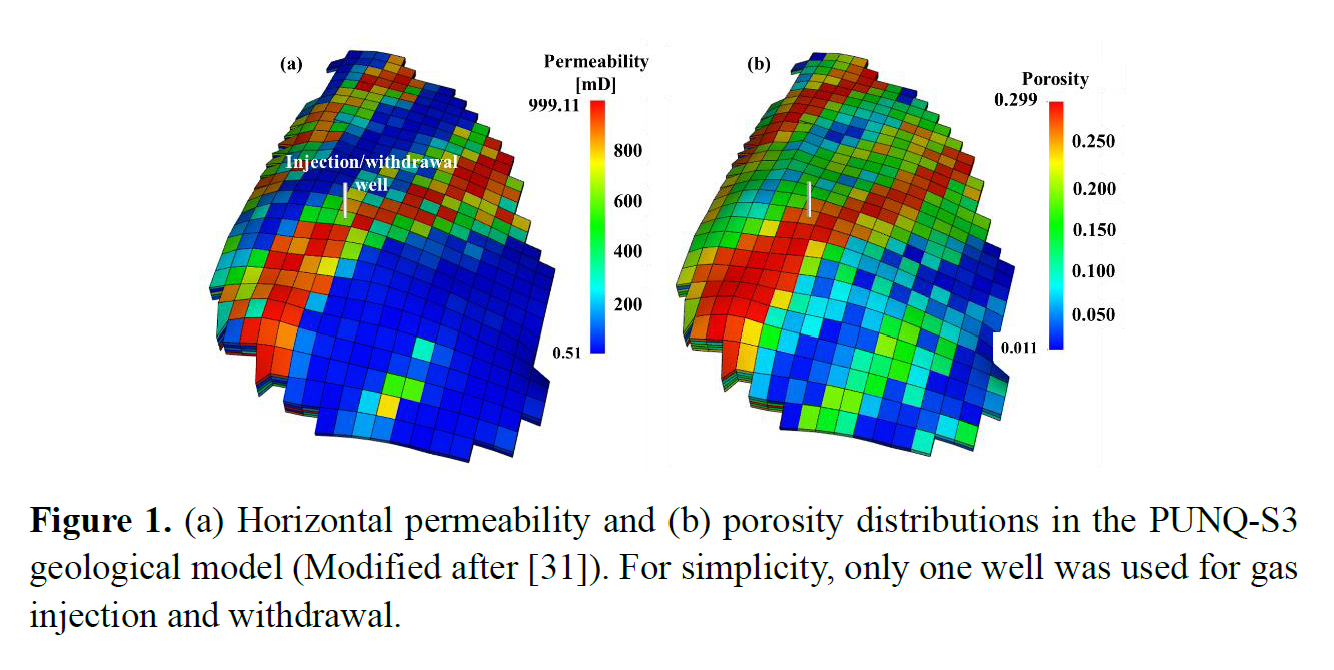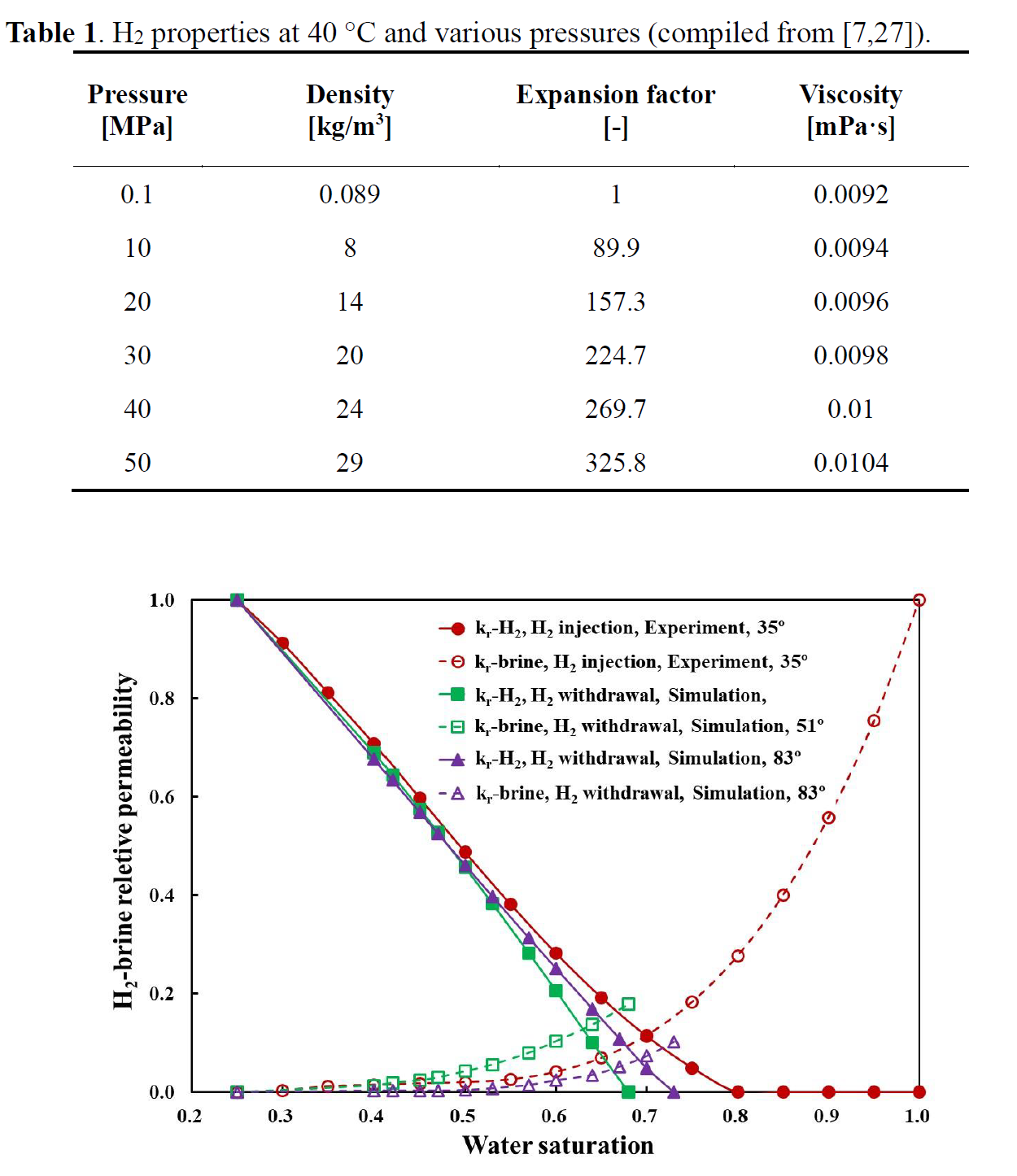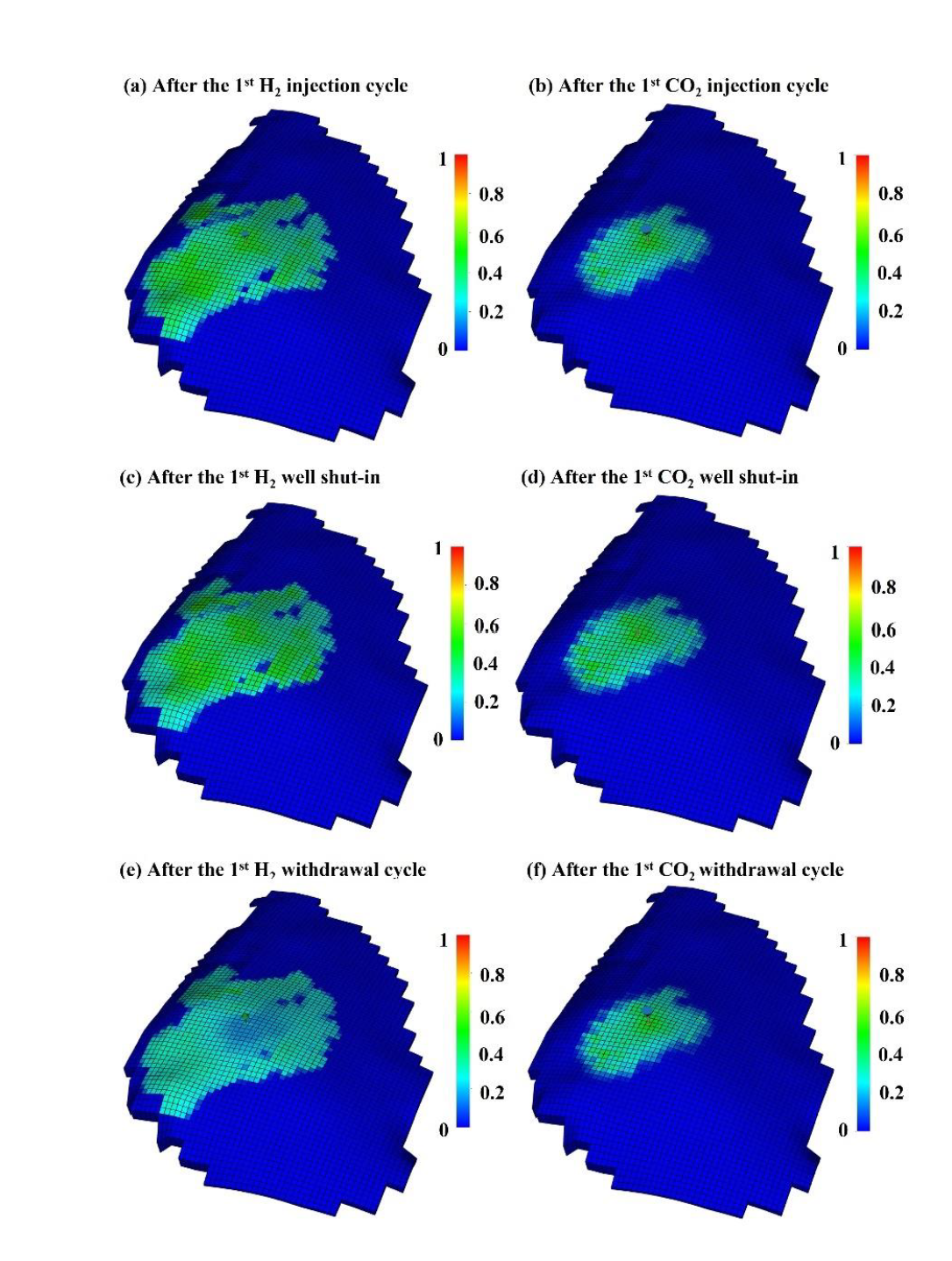Impacts of relative permeability hysteresis, wettability, and injection/withdrawal schemes on underground hydrogen storage in saline aquifers
地下储氢(UHS)是实现大规模氢能经济和推动可再生能源发展的关键策略。在水湿咸水层中进行UHS时,注入过程中的氢气会取代原来的盐水;而在在关井和氢气抽采过程中,部分盐水会渗入流动通道,取代一部分氢气。这些过程受到氢气和盐水之间的传质、相互作用以及注采方案的影响,从而影响储存能力和注入/提取效率。然而,我们对这些影响了解甚少。
因此,本研究重点研究了相对渗透率滞后、润湿性和氢气抽采速率对咸水层中UHS性能的影响。同时,我们还比较了UHS和CO2地质储存(CGS)之间的差异。主要研究结果包括:1)相对渗透率滞后导致提取因子较小,但提取纯度较高;2)提取因子随着岩石亲水性的增加而增加,而提取纯度对岩石润湿性基本不敏感;3)在类似的储存条件下,提取因子和提取纯度约比CO2的少10%。这些发现证明了相对渗透率滞后和岩石润湿性对UHS性能的重要性,并为优化氢气注入/抽采方案提供了指导。这项研究有助于推动工业规模的氢能经济的实现。
英国爱丁堡大学
Abstract
Underground hydrogen storage (UHS) is a key strategy in the implementation of a large-scale hydrogen (H2) economy and promotion of renewable energy development/utilization. For UHS in water-wet saline aquifers, H2 displaces in-situ brine during injection; during well shut-in and H2 withdrawal, brine imbibes back into the flow paths where it displaces some H2. These processes are influenced by H2-brine transport physics, H2-brine-rock interactions and injection/withdrawal schemes, which, in turn, determine H2 storage capacities and injection/withdrawal efficiency. However, these effects are poorly understood. Therefore, this work focuses on the impact of relative permeability hysteresis (RPH), wettability, and H2 withdrawal rate on UHS performance in a saline aquifer. Furthermore, differences between UHS and CO2 geo-storage (CGS) are examined. The primary findings include: 1) RPH results in a smaller H2 withdrawal factor (H2-WF), but a larger H2 withdrawal purity (H2-WP); 2) H2-WF increases with rock hydrophobicity, while H2-WP is mostly insensitive to rock wettability; 3) under similar storage conditions, H2-WF and H2-WP are approximately 10% less than CO2-WF and CO2-WP. These insights demonstrate the significance of RPH and rock wettability on UHS performance and provides guidance on H2 injection/withdrawal scheme optimization. This study aids in the implementation of an industry-scale hydrogen economy.



